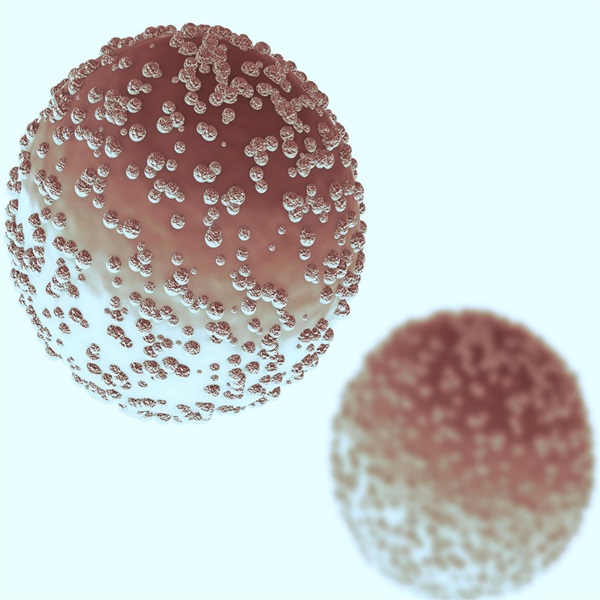Peptide Nucleic Acid (PNA) is a synthetic polymer similar to DNA or RNA. PNA can be said to have been born in Denmark, where it was originally developed by Peter E. Nielsen (University of Copenhagen), Michael Egholm (University of Copenhagen), Rolf H. Berg (Risø National Laboratory), Technical University of Denmark) and Ole Buchardt (University of Copenhagen) invented it in 1991.
Applications of PNA include altering gene expression, serving as inhibitors and promoters, antigene and antisense therapeutics, anticancer agents, antiviral agents, antibacterial and antiparasitic agents, molecular tools and probes for biosensors, DNA Sequence detection and nanotechnology.
Genome editing
In October 2022, Neubase shifted the focus of its PNA business to gene editing. Neubase, in partnership with a global healthcare company, plans to create PNAs designed to edit genetic mutations in three undisclosed diseases. Aberrant nucleic acid structures are key to endogenous repair, which may occur under sequence-specific conditions. PNA enables non-enzymatic gene editing. The method exploits the ability of PNA, discovered by Nielson in 1991, to invade and pry open double-stranded DNA molecules. By forming high-affinity heteroduplex or triplex structures within the genome, PNAs have been used to correct mutations associated with multiple human diseases with low off-target effects. Advances in molecular design, chemical modification, and delivery have enabled the systemic in vivo application of PNAs to enable gene editing in preclinical mouse models. In a β-thalassemia model, treated animals exhibited clinically relevant protein recovery and disease phenotype improvements, suggesting the potential for therapeutic application of PNAs in the treatment of monogenic diseases.
Nucleic acid sensing
The detection of specific nucleic acid sequences is crucial in biomedical research and diagnostics. The unique hybridization properties and metabolic stability of PNAs make them well suited for sensing in complex biological environments and even in whole cells. One of the main strategies for live cell imaging is to use fluorescent probes and increase the fluorescence when duplex complexes are formed. This technology has been applied to detect KRAS oncogenic mutations (SNPs). The use of fluorescent PNA probes has also been extended to the detection of triplexes.
Supramolecular drugs
Over the past decade, many studies have used PNA-ligand conjugates to self-assemble into larger structures. Assemblies of PNA-ligand conjugates have been found to have active functions in vivo. For example, PNA-ligand conjugates targeting αvβ3 integrin, a trimeric receptor overexpressed in many cancers, showed 100-fold enhanced binding upon oligomerization, leading to tumorigenesis in mouse models. Colonies reduced by 50%. PNA-labeled macromolecules have been used to program antibody fragments (Fabs) to rapidly explore bispecific antibodies.
Antisense Therapeutics
The metabolic stability and strong binding affinity of PNA make it an exploitable tool for reverse gene therapy. PNAs are steric blockers that inhibit splicing or translation of target mRNAs by binding to the start site. A PNA molecule modified with four lysines at the C terminus was shown to be effective in correcting abnormal splicing in transgenic mice, demonstrating its potential as a therapeutic agent. In another study, GPNA (α-guanidine-modified PNAs) was successfully used to inhibit the expression of EGFR, an important driver of non-small cell lung cancer, in a mouse model.
PNA Therapeutic Agent
The leading drug candidates for PNA use a direct antisense approach. South Korean pharmaceutical company OliPass has a head start here, with its most advanced drug candidate, the painkiller OLP-1002, undergoing clinical trials. Olipass’s PNAs are modified with bases containing cationic lipid groups, which improves stability and facilitates entry into cells. This makes them active in animal models at doses as low as 10 ng/kg, many orders of magnitude lower than existing antisense oligonucleotides. PNA can enter the nucleus and interact with pre-mRNA. Pre-mRNA is the first version of mRNA produced by transcription before splicing enzymes cut out the unwanted parts. By binding to these pre-mRNA molecules, PNA essentially prevents splicing enzymes from cleaning up the RNA code, causing the mRNA to not be translated correctly, thus preventing protein production.
The second company to leverage PNA technology is Pittsburgh-based Neubase Therapeutics. The company currently has PNA drug candidates targeting three diseases. Their most advanced drug candidate, NT-0200, targets myotonic dystrophy type 1, a progressive muscle disease caused by faulty RNA that traps critical splicing proteins and causes cellular translation errors. According to Neubase’s mouse studies, NT-0200 restores downstream protein production in a wide range of tissues. The company also has a PNA drug candidate that targets the repetitive trinucleotide sequence of the huntingtin gene after it is transcribed into mRNA.
Several PNA drugs are in clinical trials and others are in development. The road to developing viable PNA therapies has been difficult. Scientists in academia and startups have chemically tweaked the PNA backbone to make it easier for the molecule to sneak into cells and latch onto RNA more firmly to silence genes. While developing these therapies, chemists are now able to exploit the ability of PNA to embed into DNA helices, making it an ideal tool for gene editing and a potential alternative to the groundbreaking CRISPR-Cas9 system. Despite CRISPR’s decade-long head start, several gene-editing methods using PNAs are now in development. Although it can be said that PNA’s technology has not yet been fully developed, it should not be too far away before they officially enter the medical stage.







